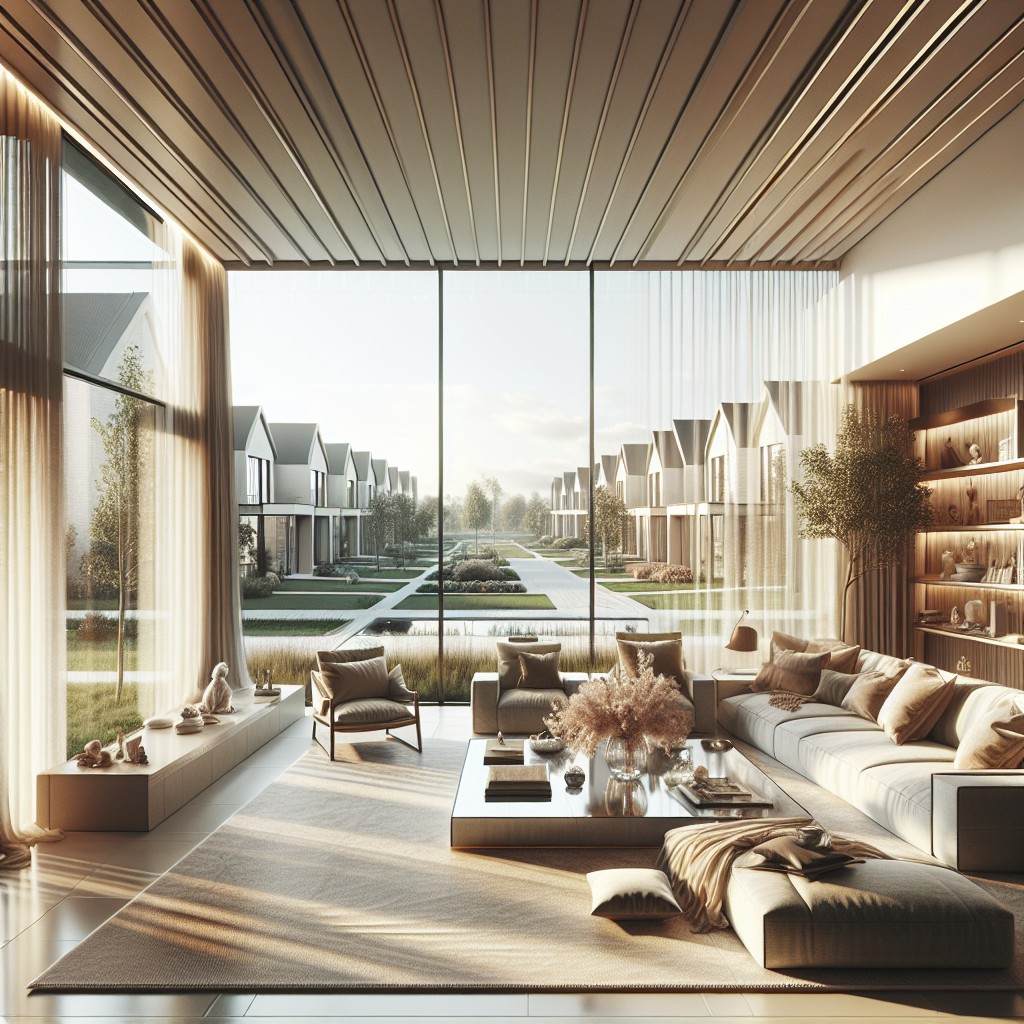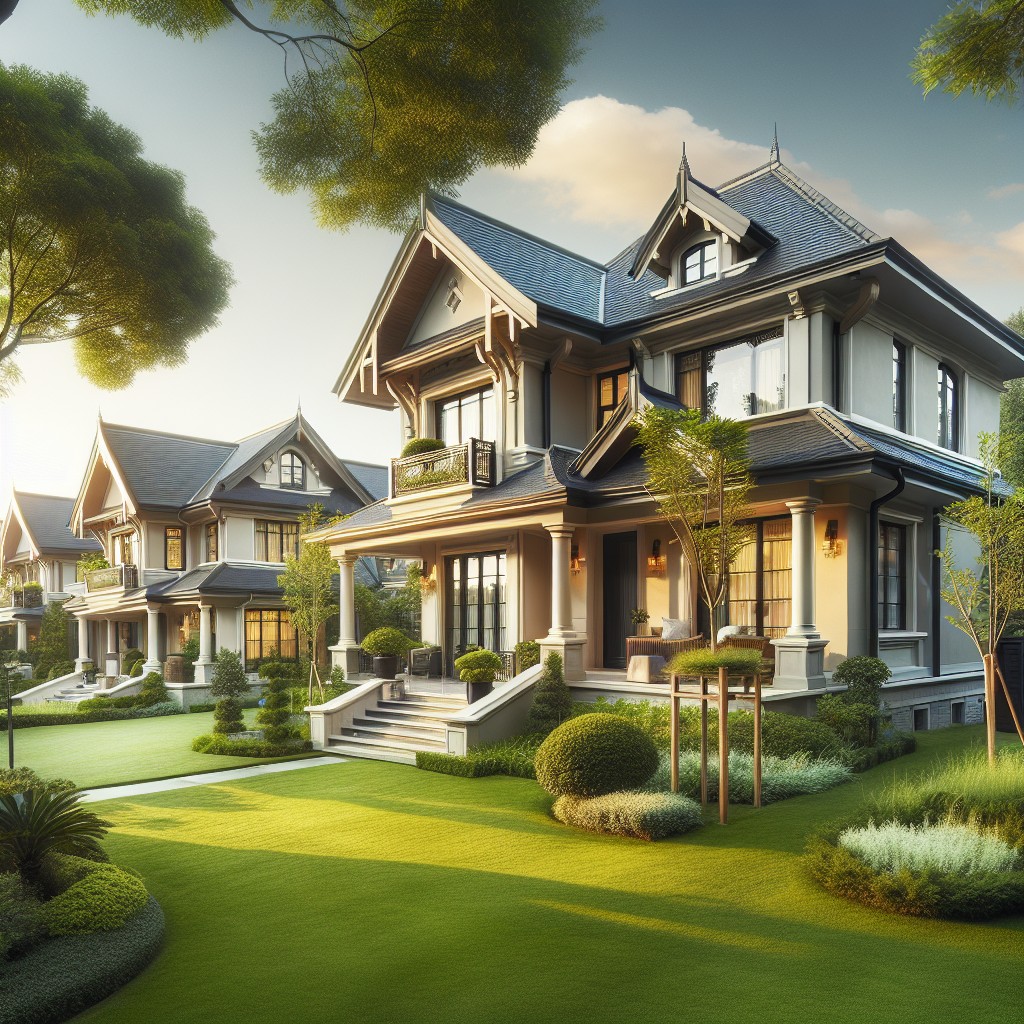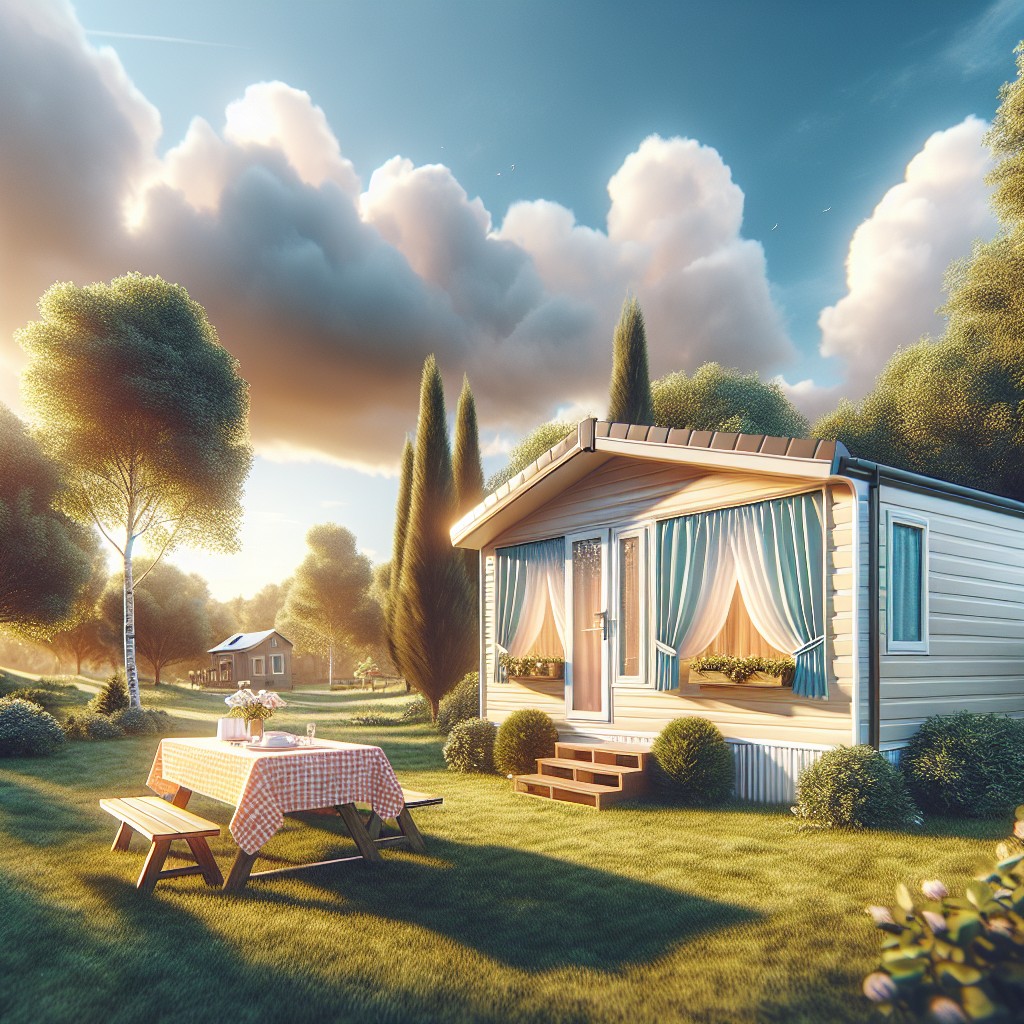Last updated on
Dive into the world of modular homes because these eco-friendly, cost-efficient models are redefining the landscape of housing and property investment.
Key takeaways:
- Modular homes are built in climate-controlled factories and transported to the building site.
- They offer shortened construction times and enhanced quality control.
- Modular housing is cost-efficient and environmentally friendly.
- Modular homes come in a variety of styles and can be easily customized.
- Financing options for modular homes are similar to traditional mortgage options.
Understanding Modular Homes

Modular homes are precision-built in climate-controlled factories before being transported to the building site in sections or modules. The modules are then assembled onto a permanent foundation, creating a structure that’s indistinguishable from traditional stick-built homes.
This method offers shortened construction times, as site preparation and module construction can occur simultaneously. The controlled environment reduces material waste and potential weather-related delays, enhancing overall efficiency.
Quality control is stringent throughout the manufacturing process, ensuring that each home meets specific standards. Once on-site, modules are connected to utilities and undergo final finishing by builders, resulting in a home that’s ready for occupancy much sooner than with conventional construction methods.
Benefits of Modular Housing
Modular housing offers several advantages over traditional construction. These homes are built in a controlled factory environment, which minimizes delays caused by weather and facilitates a higher standard of quality control. As a result, construction timelines are significantly shorter, often reducing the wait time for your new home by several weeks or even months.
Cost-efficiency is another major benefit, as the bulk purchasing of materials and assembly-line production reduce overhead costs. Transportation of the finished modules to the building site and their subsequent assembly is a streamlined process, contributing to lower labor costs.
Additionally, modular homes are designed with flexibility in mind. They can be easily expanded or reconfigured to meet changing needs, providing long-term versatility. The off-site construction also lessens the environmental impact on the build site, preserving the local ecosystem.
On the durability front, these homes must withstand transport to the site and are thus built to strict standards. They often exceed the strength requirements of traditional on-site built homes, contributing to potential long-term savings on maintenance and repairs.
Lastly, the energy efficiency of modular homes is notable. Tighter seams and state-of-the-art construction technology mean these homes are often better insulated and more airtight than their site-built counterparts, leading to lower energy consumption and savings on utility bills.
Modular Home Features
Modular homes come equipped with a variety of features that cater to both comfort and functionality:
- Factory Precision: Fabricated in a controlled environment, these homes are built to exact standards, ensuring consistent quality and precision in construction.
- Design Variability: From cozy bungalows to expansive multi-story dwellings, modular homes offer a diverse range of styles and layouts to fit different tastes and needs.
- Speedy Construction: The indoor crafting process allows for quicker build times, often taking mere weeks as opposed to months, reducing labor costs and getting you into your home faster.
- Energy Efficiency: Many modular homes are designed with energy efficiency in mind, incorporating features like high-quality insulation, double-pane windows, and energy-efficient appliances.
- Durable Materials: They often utilize durable materials that are comparable to or exceed those used in traditional on-site construction, leading to a longer lifespan for your home.
- Transport and Assembly: Built in modules that are transported to the site, these homes are then assembled by professionals, ensuring proper setup and integration.
Every modular home is a testament to modern engineering and design, offering a smart, streamlined approach to construction without compromising on the quality or customizability of a traditional home.
The Modular Home Buying Process
Embarking on the journey to purchase a modular home is an exciting endeavor, blending customization with efficiency. Begin by researching local builders and the designs they offer, ensuring they meet your needs and preferences. It is wise to visit model homes or virtual tours to get a tangible sense of the space and layout.
Once a design is chosen, the next step is securing a plot of land if you don’t already own one. It’s crucial to verify that zoning laws permit modular construction on the site.
Next, you’ll need to secure financing. Banks and lending institutions now offer loans specifically for modular homes, akin to traditional mortgage options. A down payment is typically required, and it’s beneficial to shop around for the best mortgage rates and terms.
After finances are in order, you’ll sign a contract with the builder, specifying the design, customization options, and timeline for your new home.
As your modular home is being constructed in a factory-controlled environment, simultaneously prepare your land by laying the foundation and installing utilities. Upon completion, your home will be delivered to your site where it will be assembled, a process which can often be completed in mere weeks as opposed to months.
An inspection by a local building authority ensures all is in order before you take the final step—moving into your new, personalized modular home.
Popular Modular Home Models
Ranch-Style: A single-story design that channels easy living and accessibility, ideal for those looking for a more traditional aesthetic without the fuss of stairs.
Contemporary: Sleek lines, large windows, and innovative layouts cater to buyers yearning for a modern touch. This model often incorporates eco-friendly materials and smart home technology.
Cape Cod: With its charming pitched roofs and cozy interior spaces, this model is perfect for those who admire quaint architectural details alongside modern conveniences.
Colonial: This design offers symmetry and spaciousness, usually with multiple stories, appealing to larger families or those who desire an elegant, timeless residence.
Chalet: Emphasizing high ceilings and an abundance of natural light, the Chalet model is a match for those looking to meld the comforts of home with the grandeur of nature.
Townhome: For urbanites or those with a smaller footprint in mind, townhome models offer multiple floors of space-efficient living, often within community settings akin to traditional townhouse developments.
Each model reflects varying lifestyles and preferences, granting flexibility to homebuyers in personalizing their living environments. The diversity in modular home models makes it feasible to satisfy both aesthetic desires and functional needs.
Financing Options for Modular Homes
Navigating funding for a modular home is akin to financing a traditional stick-built residence. The primary routes involve mortgages or loans, with several key avenues available:
1. Conventional Mortgages: Just like standard homes, modular properties are often financed through conventional mortgage loans offered by banks, credit unions, and mortgage brokers. Interest rates and terms can vary widely, so it pays to shop around.
2. FHA Loans: The Federal Housing Administration offers loans that typically require lower down payments and are more lenient with credit scores. These loans are ideal for first-time homebuyers or those with less-than-perfect credit.
3. VA Loans: For veterans and active-duty service members, VA loans provide an excellent option with potentially no down payment and competitive interest rates.
4. Construction-to-Permanent Loans: These loans cover the cost of the home while it’s being constructed and then convert into a traditional mortgage once the home is completed.
5. Home Only Loans: Also known as chattel loans, they are personal property loans that finance the home alone, not the land, and are common if you don’t own the land your home will be placed on.
Remember, when assessing these options, consider interest rates, down payments, loan terms, and any additional fees. It’s also important to verify that the lender is experienced in dealing with modular home financing, as the nuances differ from conventional home lending.
Comparison: Modular Homes Vs. Manufactured Homes
When choosing a prefabricated home, it’s essential to understand the distinctions between modular and manufactured homes:
- Construction Code: Modular homes are built to the same local building codes as site-built homes, while manufactured homes adhere to the federal HUD code.
- Foundation: Modular homes are typically set on a permanent foundation; manufactured homes may have non-permanent, steel-chassis foundations.
- Mobility: Once placed, modular homes are not designed to be moved, contrasting with the portability of manufactured homes.
- Appreciation and Financing: Modular homes often appreciate in value similar to traditional homes and offer diverse financing options; manufactured homes may depreciate and have more limited financing choices.
- Design Flexibility: Modular construction offers extensive customization options, often overlapping with traditional onsite construction, while manufactured homes come with preset designs and limited alterations.
State-Specific Modular Home Options
Navigating the variations in modular home options across different states is crucial for prospective buyers. Local building codes, climate considerations, and available styles can dramatically influence the design and construction of modular homes.
- Building Codes and Regulations: Each state has unique building codes that affect modular home construction. For example, homes in California must adhere to stringent earthquake-resistant standards, while Florida’s codes focus on hurricane readiness.
- Climate Adaptations: Modular home manufacturers often tailor designs to local climates. In colder regions like Minnesota, homes might come with increased insulation and snow load engineering, whereas, in Texas, cooling systems are prioritized.
- Local Aesthetic: The local architecture can influence modular home styles. States with historic colonial backgrounds like Massachusetts may offer more traditional designs, whereas places like Colorado provide more rustic, cabin-style options.
- Preferred Builders: States may have a list of preferred modular home builders that specialize in adhering to local guidelines and are familiar with regional needs. This can streamline the building process.
- Land Availability and Cost: Depending on the state, land availability and cost will vary, possibly affecting the type of modular home you can place on a lot. Urban areas might offer more compact, multi-story designs, while rural areas may have options for larger, sprawling designs.
Prospective buyers should consult with local modular home dealers or builders to understand state-specific options, ensuring they meet local requirements and personal preferences.
Customization of Modular Homes
One of the most appealing aspects of modular homes is their flexibility in design. With a variety of floor plans and architectural styles, homeowners can tailor their living spaces to match their needs and aesthetic preferences.
Floor Plan Customization: Choose the number of bedrooms and bathrooms, add a home office, or design an open-concept living area. Some manufacturers even allow you to merge multiple modules for expansive spaces.
Exterior Finishes: Select from a range of siding materials, colors, and textures to create a unique exterior. Add porches, decks, or patios to enhance outdoor living.
Interior Details: From flooring materials to kitchen cabinets and countertops, every detail can be personalized. High ceilings, skylights, and large windows can be incorporated to add natural light and the illusion of more space.
Energy Efficiency: Opt for energy-efficient windows, insulation, and heating and cooling systems. Integrating smart home technology can further control energy usage and costs.
Accessibility Features: For those planning for long-term livability, doorways can be widened, and accessibility features like ramps and grab bars can be planned from the outset.
Remember, the manufacturer’s pre-set options and your imagination set the boundaries for how customized your modular home can be. Open dialogue with your provider ensures your vision becomes a reality.
Sustainable Features of Modular Homes
Modular homes often excel in sustainability due to their construction process and potential for incorporating eco-friendly features. Precision engineering in a controlled factory environment reduces waste and improves efficiency. Materials are ordered in bulk, further cutting down on excess, and the leftover supplies can be recycled or repurposed for future projects, minimizing landfill contributions.
Energy efficiency is another hallmark of modular construction. Homes can be designed with high-grade insulation, tight-sealing windows, and energy-efficient appliances, reducing the overall energy footprint. Many modular homes are also primed for the addition of solar panels, rainwater harvesting systems, and greywater treatment setups, which contribute to a reduced dependency on non-renewable resources.
In terms of heating and cooling, modular homes can incorporate advanced HVAC systems that are calibrated to the specific needs of the house, ensuring that no energy is wasted maintaining a comfortable living environment. The adaptability of modular construction means that green roof systems, which offer natural insulation and can reduce the urban heat island effect, are also an option.
Not forgetting the materials used: sustainably sourced timber, low VOC paints, and bamboo or cork flooring are frequently used materials that support a healthier indoor environment and a lesser ecological footprint. These homes meet and often exceed the strict environmental standards set by various green building certification programs, like LEED and Energy Star.
In essence, the inherent qualities of modular homes align with the principles of sustainable living, from the method of their construction to the myriad eco-friendly features that are easily integrated into their design.
FAQ
Is it cheaper to build a house or get a modular?
Typically, modular homes tend to cost less than building a house from scratch due to the reduced labor involved, as the majority of the construction occurs in a factory before installation at the site.
How much does a modular home cost in PA?
The average cost of a modular home in Pennsylvania falls within the range of $50 to $90 per square foot.
How much is a modular home in California?
A modular home in California can range from $54,900 to $1,894,400, with options for 1 to 4 bedrooms and 1 to 4 bathrooms.
What is the average cost of a modular home in Florida?
The average cost of an 1800-square-foot modular home in Florida is approximately $150,000.
How does the price of a modular home compare to traditional construction in New York?
The price of a modular home in New York is typically 10-20% less than traditional construction due to efficiencies in production, material sourcing, and reduced labour costs.
What are the additional costs involved in setting up a modular home in Texas?
The additional costs involved in setting up a modular home in Texas include land acquisition, site preparation, delivery, assembly, utilities setup, landscaping, and potential local taxes or permits costs.
What factors influence the cost of a modular home in Washington State?
The cost of a modular home in Washington State is influenced by factors such as the size and design of the house, the materials used, the provider’s charges, site preparation, and installation expenses.
Related reading:
Table of Contents





